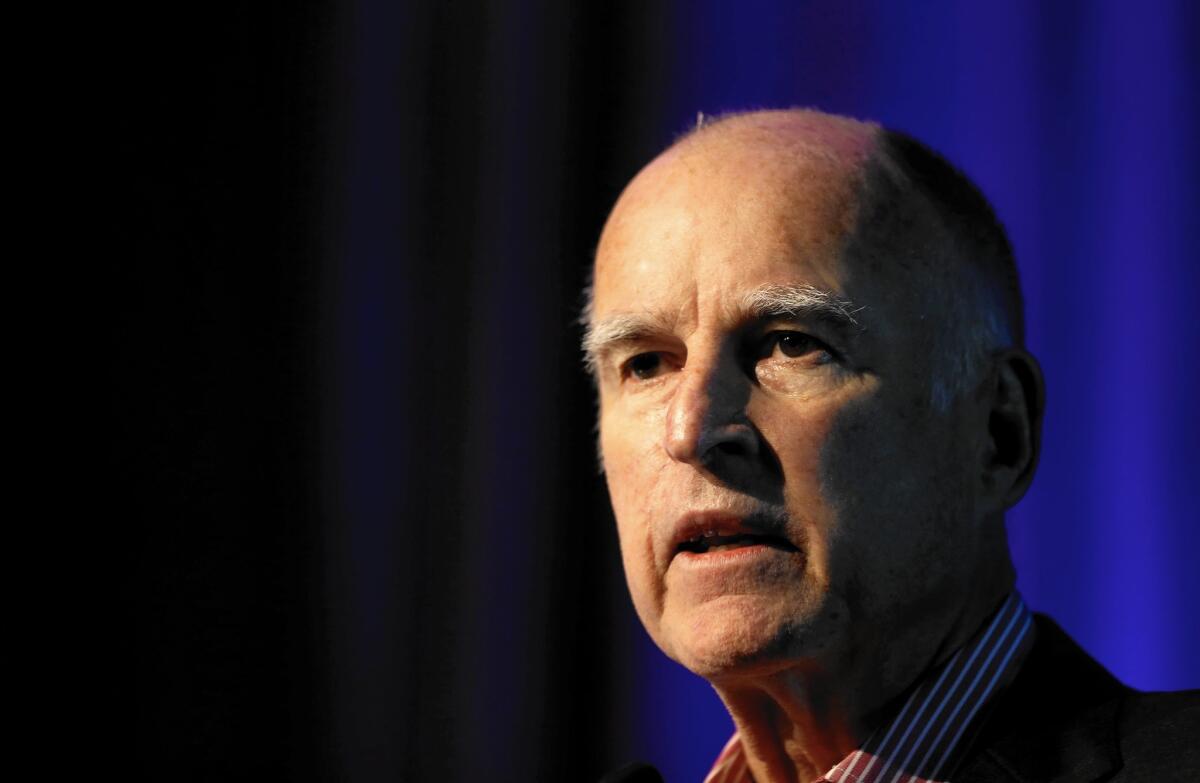Many California politicians finished election with funds for future use

Reporting from SACRAMENTO — Facing few serious challenges for statewide posts in last year’s election, many California politicians were free to make financial decisions with an eye toward the future, final campaign reports show.
John Chiang had token opposition in his race for state treasurer after eight years as controller, but he raised enough money to have $3.3 million left over. His political consultant said he “will definitely need the money” (but did not respond when asked for more specifics about its use).
Gavin Newsom, who is starting his second term as lieutenant governor after being reelected, has $3 million and an eye on the race for governor three years from now.
No statewide official socked away more money than Gov. Jerry Brown, with $24 million between his candidate account and a fund for ballot measures. He spent little to defeat Republican Neel Kashkari in November, and Brown says the still-robust war chest could be used for more ballot-measure campaigns, preventing him from being treated like a lame duck during his fourth and final term.
Atty. Gen. Kamala D. Harris didn’t save as much: $1.3 million. But in the closing days of her campaign — long after it was clear she did not face a credible challenge — she spent more than $1.2 million on television advertising in Southern California. Now she’s running for U.S. Senate (though under different fundraising rules) and trying to head off a 2016 primary challenge from former Los Angeles mayor Antonio Villaraigosa, who has said he might enter the race to succeed Barbara Boxer.
Democrats continue to hold every statewide seat, their deep pockets a reminder of their continued dominance of California politics. Allan Hoffenblum, a former Republican strategist who publishes a nonpartisan election guide, said their funds can serve as an insurance policy.
“The next race may not be so easy,” Hoffenblum said, “so they pile up the money.”
Even in last year’s more competitive races, Democrats had a clear financial advantage, according to the reports, filed recently with the state.
In the secretary of state contest, Alex Padilla spent $3.8 million to defeat Republican Pete Peterson, who used just $506,000.
Unions flexed their muscle in the controller race, helping Democrat Betty Yee beat Fresno Mayor Ashley Swearengin, a Republican. Yee spent close to $2.4 million; unions burned through $800,000 to bolster her campaign independently. Swearengin spent less than $1.4 million.
The nonpartisan race for state schools superintendent was a slugfest between two Democrats: incumbent Tom Torlakson, a union ally who spent $2.3 million, and challenger Marshall Tuck, who spent $2.5 million. Unions and education groups spent millions more independently, and Torlakson won a second term in office.
The California Democratic Party spent $24.4 million last year, and has $8.5 million left. Its Republican counterpart has less than $1 million after spending close to $20 million. The money went toward campaign consultants, polling, fundraising and contributions to candidates, among other expenses.
The biggest money went to oppose two healthcare-related ballot measures, both of which were defeated. Healthcare providers and insurance companies dropped $58.6 million to sink Proposition 46, a proposal to allow higher awards in medical malpractice lawsuits and require that physicians be tested for drug and alcohol use.
Trial lawyers and the advocacy group Consumer Watchdog spent $11 million in favor of the measure and finished the campaign with more than $1.1 million in debt.
Consumer Watchdog also struck out with Proposition 45, an initiative that would have granted the state insurance commissioner more power to regulate rates. Just $2.6 million was spent in favor of the measure, while $56.8 million was spent in opposition, mostly by hospitals and insurance companies.
Advocates had more luck with Proposition 47, which voters passed to reduce drug possession and some theft charges to misdemeanors. Supporters, including New York hedge fund billionaire George Soros and a national network of nonprofit organizations, spent $9.5 million.
Opponents spent $550,000, most of it from law enforcement organizations.
Voters also approved Proposition 1, a $7.5-billion water bond measure, and Proposition 2, which bolstered the state’s rainy-day fund. Both were priorities for Brown, who spent $5.2 million to campaign for them.
That spending constituted almost all the $6.2 million the governor spent in the primary and general elections. Meanwhile, Kashkari spent more than $7 million, about $3 million of it from his own pocket.
Kashkari had already used some of his own money in 2013 to prepare for his campaign, but was not required to report it.
The spending was remarkably low for a California governor’s race and underscored the low-key nature of the campaign. Kashkari was viewed as a long shot from the beginning, and struggled to raise enough money to successfully challenge the popular incumbent.
Twitter: @chrismegerian
Times staff writers Michael Finnegan, Marc Lifsher, Melanie Mason, Patrick McGreevy, Seema Mehta and Paige St. John contributed to this report.
More to Read
Sign up for Essential California
The most important California stories and recommendations in your inbox every morning.
You may occasionally receive promotional content from the Los Angeles Times.











